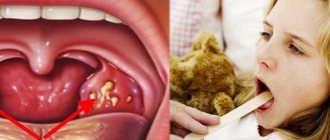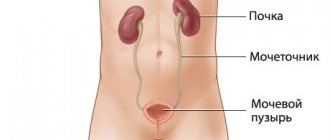Carbuncle is an acute purulent-necrotic inflammation of several closely located sebaceous glands and hair follicles, caused by Staphylococcus aureus (St. aureus). It mainly affects the back of the neck, interscapular area, skin of the buttocks and face. On the extremities, carbuncles appear much less frequently.
Most often, a carbuncle is formed in patients with blood diseases, diabetes, obesity, and reduced immunity. Predisposing factors may also include oily skin type and poor personal hygiene.
Causes of carbuncle
The appearance of a carbuncle is preceded by an inflammatory process in the soft tissues, which usually begins with an inflammatory disease of the hair follicle - staphylococcal folliculitis, less often - with streptococcal folliculitis.
The development of inflammation can lead to the formation of a boil, which is an acute purulent-necrotic inflammation of the hair follicle. When several such boils form in one area of the body, they can merge with each other.
The product of the merger of several boils is a carbuncle. A sharp bursting pain occurs in the area of infiltration. The skin over the infiltrate becomes purple, tense, and swollen. Large amounts of gray-green pus are released from the pustules.
The tissues become necrotic. There are clear signs of general intoxication: tachycardia, nausea, vomiting, severe headache, hyperthermia up to 39-40 ° C, leukocytosis, shift of the blood count to the left, lack of appetite, insomnia. If the carbuncle is localized on the face, the symptoms of intoxication are much more pronounced, even to the point of fainting.
After exfoliation of necrotic tissue and removal of pus, the severity of signs of intoxication weakens significantly.
Risk factors for carbuncle formation:
- the presence of a chronic source of infection in the body;
- lack of vitamins;
- diabetes mellitus and other metabolic disorders;
- exhaustion of the body;
- psychological overload;
- immunodeficiency states;
- recent operations or serious illnesses;
- skin contamination, poor sanitary culture;
- nutritional deficiency;
- obesity;
- prolonged friction of the skin with clothing;
- increased sweating.
Carbuncle mainly affects teenagers and young adults. Men get sick more often than women.
Prognosis, complications, prevention
In case of untimely treatment and the development of complications, the prognosis largely depends on the location of the lesion, the general condition of the patient, the presence of concomitant pathology, etc. Severe complications of the carbuncle are phlegmon (diffused purulent inflammation), progressive thrombophlebitis (inflammation of the venous wall with the formation of blood clots), and sepsis. With a facial carbuncle, purulent meningitis (inflammation of the meninges) may develop.
Prevention of carbuncle is compliance with sanitary and hygienic standards, avoiding hypothermia, injuries, timely treatment of chronic diseases, and maintaining a healthy lifestyle.
The operation of opening the carbuncle is performed under general anesthesia, since the use of local anesthesia creates conditions for the spread of infection. Local anesthesia is an option only in severely decompensated patients for whom general anesthesia is contraindicated.
Symptoms of carbuncle
Clinical signs of a carbuncle are:
- suppuration and wound formation;
- hyperemia of the skin around the lesion;
- severe pain in the entire affected area.
The appearance and development of a carbuncle is usually accompanied by the following symptoms:
- elevated temperature, which often reaches 40 degrees;
- major intoxication;
- vomiting;
- nausea;
- loss of appetite;
- headache;
- general malaise.
These signs are especially pronounced when the carbuncle appears on the face or neck.
There are 3 stages of carbuncle:
Stage 1: infiltrate (folliculitis)
During this period, nodes form under the skin, which will be represented by inflamed hair follicles. The infiltrate contains adipose tissue, pus, lymph and lymphocytes. Nodules rise above the surface of the skin.
Since the nutrition of the dermis is disrupted, it acquires a bluish color. After a few days (from 9 to 12), the infiltrate reaches impressive sizes. It can be about 10 cm in diameter. The skin is swollen, tense, and hot to the touch. The more swelling there is, the more intense the pain will be.
Stage 2: purulent formation
At the stage of suppuration, the carbuncle reaches maturity. Blisters form on it, which are filled with pus. They open, so the surface of the carbuncle resembles a sieve. Through these small holes, pus leaks out, mixed with blood and dead epithelium.
The suppuration stage lasts about 14-21 days. During this period, the patient’s general health deteriorates.
Stage 3: necrosis and tissue rejection
During this period, pus from the carbuncle stops oozing. At the site of inflammation, ulcers are formed that will have rods. They merge with each other, forming one large defect. Tissue damage is very intense and often involves muscles. The affected area is black.
The wound heals slowly, gradually filling with granulations. A scar remains in its place. The necrosis stage lasts about 21 days.
Localization
The “favorite” places for the localization of carbuncles are the maxillofacial area and the back of the neck.
Pathology also develops:
- on the back, between the shoulder blades;
- on the buttock;
- under the arm;
- on the lower back.
More often, carbuncles appear in those places of the body where fatty tissue is more developed and has a looser structure.
Ulcers on the face, for example, in the lip area, on the chin or carbuncle of the nose, are the most dangerous.
Bacteria from this area, using the bloodstream and lymphatic vessels, can penetrate the veins inside the skull and thereby lead to inflammation in the brain and damage to the nerve trunks .
The formation of carbuncles on the chest and limbs is possible, although ulcers appear on the arm or leg quite rarely.
Carbunculosis in the groin in women can develop due to improper treatment of boils, as a complicated form of this pathology.
Therefore, ulcers on the labia should be treated in a timely manner by consulting an experienced doctor.
Purulent inflammation can also affect internal organs. Recently, doctors have noted an increase in cases of kidney carbuncle, a necrotic lesion in which an infiltrate forms in the cortex.
If you are interested in what is the proper treatment for seborrheic dermatitis of the scalp, read our publication.
The causes, characteristic symptoms and treatment of herpes zoster are described in detail in this article.
Methods for diagnosing carbuncle
Carbuncle is diagnosed based on clinical symptoms.
Differential diagnosis is carried out with the following pathologies:
- rupture of an epidermal cyst;
- hidradenitis (if the carbuncle is localized in the perineum or armpit);
- anthrax;
- chronic ulcerative herpes.
Laboratory diagnostics
Microscopy of the smear reveals staphylococci. Bacterial culture allows identification of the pathogen and assessment of sensitivity to antibiotics.
Sign up for diagnostics To accurately diagnose the disease, make an appointment with specialists from the Family Doctor network.
Features of the rehabilitation period
Rehabilitation after opening the infiltrate lasts 10-14 days. During this time, you should strictly adhere to all medical recommendations:
- for 5-7 days after the intervention, you need to change the dressings daily, using wound healing and antiseptic drugs prescribed by the doctor;
- avoid skin injury;
- eat rationally;
- maintain careful hygiene;
- lead an active, healthy life.
To prevent the spread of infection, a short course of massive antibiotic therapy is prescribed. To speed up healing, a course of physiotherapeutic procedures (UHF, UV irradiation) is carried out. For patients with a predisposition to purulent-inflammatory diseases of the skin and subcutaneous structures, consultation with an endocrinologist and immunologist is recommended. You can learn more about the operation at a consultation with a surgeon. You can make an appointment with a GMS Hospital specialist around the clock – on the website and by phone.
Treatment methods for carbuncle
Small carbuncles that occur without noticeable intoxication and deterioration of the patient’s general condition are treated on an outpatient basis.
In cases where
- the patient is severely intoxicated,
- the carbuncle is large and localized on the face,
- the patient suffers from uncompensated diabetes mellitus or other serious diseases,
treatment is carried out in a hospital.
Conservative treatment
If treatment of the carbuncle was started at the stage of its maturation, then conservative methods are used, which in most cases leads to regression of the disease, that is, resorption of the infiltrate.
Antibacterial drugs with a broad spectrum of action are indicated for oral administration to the patient.
At the same time, the carbuncle itself is injected with antibiotics. To reduce pain, analgesics (Novocaine, Lidocaine) are used.
The surface of the carbuncle is treated with ethyl alcohol or other alcohol-containing antiseptics. An aseptic dressing is applied. Syntomycin or streptomycin emulsions are also used.
Surgery
If the carbuncle enters the necrotic stage, then this is an indication for surgery, which is performed while using antibiotic therapy.
The operation consists of dissecting the carbuncle and removing necrotic tissue from it.
Then a tampon with a hypertonic sodium chloride solution and proteolytic enzymes is inserted into the wound.
To clean the postoperative wound and completely remove necrotic tissue, the dressing is changed daily.
Physiotherapy
At the maturation stage, as well as in the postoperative period, UHF therapy and local ultraviolet radiation are prescribed.
To stimulate the body's defenses, intravenous laser and ultraviolet irradiation of blood can also be performed.
More information about the treatment method
Make an appointment Do not self-medicate. Contact our specialists who will correctly diagnose and prescribe treatment.
Rate how useful the material was
thank you for rating
Folk remedies
Photo: fittedmagazine.com
You should not use local methods (lotions, compresses) on your own, because choosing treatment methods without taking into account the severity and stage of development of the abscess can cause severe complications. At home, it is recommended to use safer general remedies:
- Brewer's yeast . The high content of amino acids, vitamins B and D helps the body fight infection and eliminate toxins faster. Yeast is taken before meals 3 times a day in the amount of 1 teaspoon.
- Chicory . It has an immunostimulating effect, contains useful vitamins and minerals, and has antimicrobial and anti-inflammatory effects. Pour 2 teaspoons of chicory root into a glass of boiling water, leave for 2 hours, then consume a third of a glass 3 times a day.
To increase immunity, rose hip tea, cranberry juice, infusion of ginger and lemon, infusion of sea buckthorn with lemon and honey, and a decoction of bay leaves are useful. Before using any folk recipe, you should consult your doctor to rule out contraindications.
The information is for reference only and is not a guide to action. Do not self-medicate. At the first symptoms of the disease, consult a doctor.
How is it different from a boil?
The main difference between a carbuncle and a furuncle is that a boil affects only one hair follicle or sebaceous duct, while a carbuncle affects several follicles.
What else is the difference between these pathologies:
- carbuncles are accompanied by penetration of the inflammatory process deep into the skin - into the dermis and hypodermis. With furunculosis such lesions are not observed;
- An area of necrotic skin with carbunculosis may acquire a black color, but this is not typical for boils;
- The localization of boils is more extensive - any part of the body except the soles and palms. The places where boils occur are limited - pathology selects special areas, most often the face, the occipital region, and ulcers also form on the butt, in the perineum, on the back;
- the inflammatory reaction with furunculosis is weaker than with carbunculosis. Accordingly, the general condition varies: in the first case, the state of health is relatively normal, but carbuncles are accompanied by a severe clinical picture;
- a purulent-necrotic core with a carbuncle takes longer to form than with a boil - in 2-3 weeks;
- pus from the area affected by the carbuncle comes out through multiple holes, and in case of furunculosis - through one;
- A carbuncle is fraught with the formation of a noticeable scar; after a boil, no such traces remain.
Carbunculosis is more severe, intoxication is stronger, and the disease requires more serious treatment, often in a hospital.








